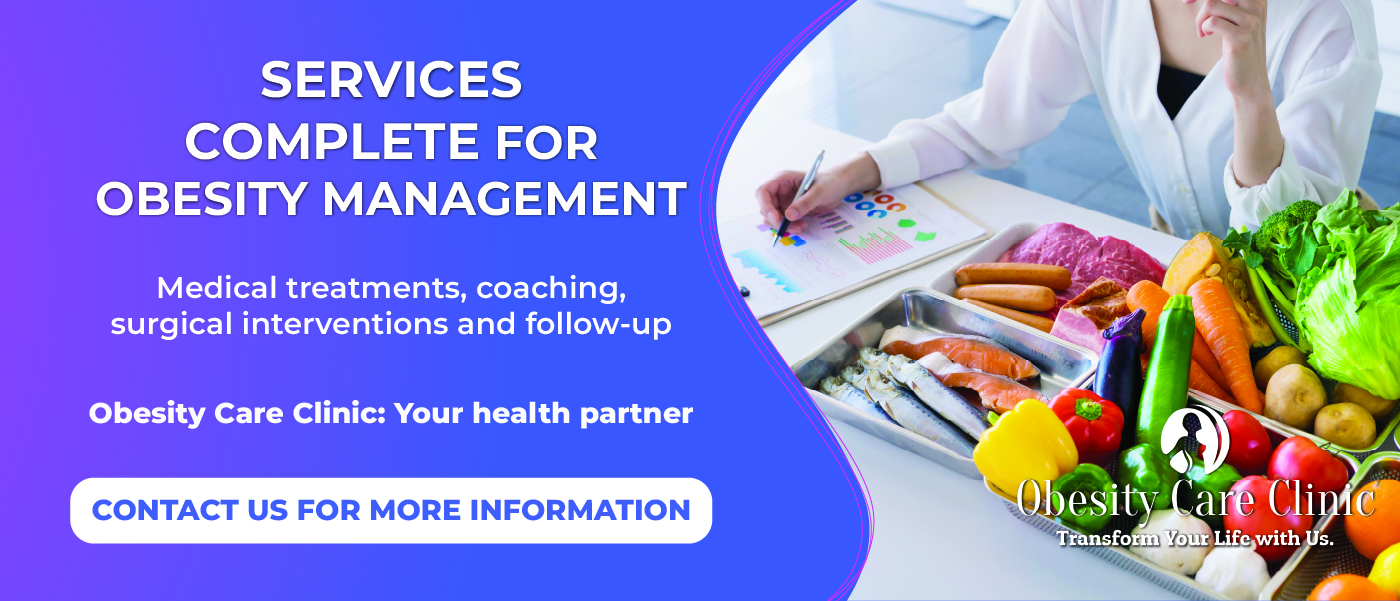Table of Contents
Introduction
Endoscopic Sleeve Gastroplasty (ESG) represents a groundbreaking approach in the battle against obesity, a worldwide epidemic with vast health implications[1]. As a non-surgical procedure, ESG has transformed the landscape of bariatric interventions, offering a minimally invasive method to limit the stomach’s capacity and promote weight loss[2]. However, the procedure’s success relies not merely on its surgical precision but heavily on the individual’s dietary choices and habits following the operation.
Embracing the proper post-ESG diet is not just a matter of quantity but quality. The food selections after the procedure play a pivotal role in healing, sustaining weight loss achievements, and maintaining overall health[3]. The gradual progression from a liquid diet to solid foods while navigating the challenges and changes post-ESG requires deep understanding and guidance. Furthermore, making the right dietary choices is more than a means to achieve weight loss—it’s a pathway to improved vitality, mood elevation, and overall life enhancement[4].
This article is the compass for those navigating the intricate dietary journey post-ESG. Through scientific insight and practical guidance, we aim to elucidate the vital dietary principles, potential pitfalls, and proven strategies to ensure a healthier and sustainable post-ESG lifestyle. In an era where diet and health are often intertwined with overwhelming information, we seek clarity and direction for those embarking on this transformative journey[5].
Understanding ESG and Its Impact on Digestion
How ESG Works
Endoscopic Sleeve Gastroplasty (ESG) is a relatively recent addition to the array of bariatric interventions, setting itself apart by being minimally invasive[6]. Unlike traditional bariatric surgeries that involve incisions, ESG is performed endoscopically, wherein a flexible tube equipped with a camera and suturing device is inserted through the patient’s mouth and into the stomach. Once inside, the stomach’s size is reduced by suturing large portions, creating a tubular, sleeve-like shape[7]. This alteration limits the stomach’s capacity and ability to stretch, leading to early satiety and reduced food intake.
Changes Post-ESG: Stomach Capacity and Digestion
Following the ESG procedure, the stomach’s newly reduced capacity is crucial in aiding weight loss. With a smaller space to hold food, patients often feel full after consuming significantly smaller portions than before[8].
But the implications of ESG go beyond just stomach size. The procedure’s impact on digestion is noteworthy. Food stays in the stomach for a shorter duration with a smaller stomach, leading to quicker digestion and faster movement into the small intestine. This alteration might necessitate changes in the types of food consumed, as certain foods could be digested differently or cause discomfort due to the swift transit[9]. Additionally, the modified anatomy can influence the secretion of gut hormones involved in hunger, satiety, and blood sugar regulation, further reinforcing the dietary changes post-ESG[10].
By understanding the profound changes ESG brings, patients can better navigate their post-procedure dietary journey, ensuring weight loss and optimal digestive health.
The Critical First Weeks After ESG
Immediate Dietary Shifts
In the immediate aftermath of the ESG procedure, the patient’s digestive system is incredibly delicate, requiring a carefully curated diet to foster healing and minimise complications[11]. Initially, patients are recommended to adhere to a clear liquid diet, often lasting several days. This phase primarily includes broths, clear juices, and water, ensuring the sutured stomach remains unstrained[12].
Patients can transition to a complete liquid diet as the first week progresses, integrating thicker beverages such as protein shakes, milk-based soups, and yoghurt. This phase ensures that patients receive essential nutrients without exerting undue pressure on their newly altered stomachs.
Progression to Semi-Solids and Solids
By the end of the first week or the beginning of the second, many patients are ready to embrace a diet of pureed foods. Soft foods that can be easily mashed or blended—like soft fruits, cooked vegetables, and tender meats—were introduced during this period[13].
Transitioning to solid foods is recommended around the third or fourth-week post-procedure. However, this transition demands caution. Even as the stomach heals, its reduced capacity implies that overeating can lead to discomfort, nausea, or vomiting. Patients must learn to recognise their new satiety signals, to consume smaller portions, and to chew thoroughly. Moreover, certain foods, especially those high in sugar or fats, might be less tolerated and could cause “dumping syndrome,” a condition characterised by abdominal cramps, nausea, and diarrhoea following food consumption[14].
Navigating these critical first weeks, post-ESG is a journey of adaptation. With patience, guidance, and diligent dietary adherence, patients can lay a robust foundation for long-term success and wellness[15].
Transitioning to Solid Foods: The Soft Foods Phase
Introducing Soft Foods
The phase of reintroducing solid foods post-ESG is of paramount importance, setting the stage for the patient’s dietary habits in the long term[16]. Typically commencing around the third week, the soft foods phase is a vital intermediate step before the complete introduction of solids. During this period, the focus is on foods that are easy to chew and digest. Examples include mashed potatoes, scrambled eggs, soft fruits like bananas and peaches, steamed vegetables, and finely minced meats or poultry[17]. Dairy products, like cottage cheese or soft yoghurt, can also be incorporated.
Guidelines and Precautions
There are several vital guidelines patients should adhere to during this phase:
- Portion Control: Given the newly reduced stomach size, starting with small portions and gradually increasing as tolerated is crucial. Overeating can lead to discomfort and potential complications[18].
- Chewing Thoroughly: Proper mastication is essential. Thoroughly chewed food ensures easier digestion and helps avoid blockages or discomfort.
- Avoiding Problematic Foods: Foods that are overly spicy, acidic, or difficult to digest should be avoided. Some foods like beans or broccoli can cause gas and discomfort in the initial stages[19].
- Hydration: It’s essential to keep hydrated. However, drinking fluids with meals should be minimised, as it can quickly fill the stomach and potentially lead to nausea.
Regular consultation with healthcare professionals can be invaluable as patients navigate the soft foods phase. They provide guidance tailored to individual needs, ensuring a smooth transition and setting the pace for the subsequent introduction of a broader range of solid foods[20].
Navigating the Long-term Diet Post-ESG
Balancing Nutritional Needs
After successfully navigating the initial post-operative phases, ESG patients confront the challenge of sustaining a long-term balanced diet. This phase is crucial as the ultimate success of the procedure depends mainly on consistent and informed dietary choices[21]. Patients must ensure a diet rich in proteins, vitamins, and minerals to avoid nutrient deficiencies. Lean meats, fish, whole grains, legumes, fruits, and vegetables should be staples in their daily intake. Additionally, recommended supplements, like Vitamin B12, Vitamin D, iron, and calcium, can help bridge potential nutritional gaps[22].
Mindful Eating and Avoiding Pitfalls
Long-term success post-ESG requires not just conscious food choices but also an awareness of eating behaviours:
- Listening to Satiety Cues: The reduced stomach size post-ESG naturally limits food intake. Learning to recognise early signs of fullness and stopping eating at that point is essential to prevent discomfort or complications[23].
- Limiting Empty-Calorie Foods: While the reduced stomach size can help control quantity, avoiding foods high in sugar or unhealthy fats with minimal nutritional value is crucial. These can also increase the risk of dumping syndrome[24].
- Staying Hydrated: Drinking enough water throughout the day promotes digestion and overall well-being. However, avoiding drinking large volumes at once is advisable, especially during meals.
- Regular Check-ups: Periodic consultations with healthcare professionals help track nutritional status, adjust dietary plans, and address potential concerns.
With commitment and informed choices, the long-term dietary journey post-ESG can lead to sustained weight loss, improved health outcomes, and enhanced quality of life[25].
Potential Challenges and Solutions
Common Dietary Challenges Post-ESG
Navigating one’s diet after ESG is not without its trials. Several common dietary challenges arise in the post-operative journey. One frequent issue is “dumping syndrome,” a condition where ingested foods bypass the stomach too quickly, entering the small intestine and leading to nausea, bloating, and dizziness[26]. Another concern is the risk of nutrient deficiencies, as patients may struggle to obtain the necessary vitamins and minerals from their reduced food intake[27]. Additionally, some individuals face difficulties in breaking old habits, leading to the consumption of unhealthy foods that can hamper weight loss and overall recovery.
Overcoming These Challenges
- Education and Awareness: Knowledge is key. Understanding potential problems, their symptoms, and the rationale behind dietary recommendations can empower patients to make informed decisions[28].
- Supplementation: Doctors often recommend specific supplements post-ESG to counteract potential deficiencies. Regular blood tests can help monitor nutrient levels and adjust supplementation accordingly[29].
- Mindful Eating: Developing a conscious relationship with food can aid in recognising satiety cues, understanding emotional eating triggers, and making healthier choices. Techniques like slow eating, avoiding distractions during meals, and journaling can be beneficial[30].
- Support Systems: Joining support groups, whether online or offline, allows patients to share experiences, learn from others, and receive emotional backup during tough times.
- Regular Follow-ups: Staying in touch with healthcare professionals can help in the early identification and management of challenges, ensuring a smoother post-ESG journey[31].
With the right strategies and support, patients can effectively address and overcome the dietary challenges presented post-ESG, optimising their health and weight loss outcomes.
Benefits of a Well-Managed Post-ESG Diet
Improved Weight Loss Outcomes
A key motivator for undergoing ESG is to achieve substantial and sustainable weight loss. Adhering to the dietary guidelines post-ESG ensures that the weight loss journey is effective and lasting. Studies have demonstrated that patients who follow their dietary recommendations after the procedure tend to achieve and maintain a more significant weight loss over time than those who deviate from the guidelines[32].
Enhanced Overall Health
Beyond weight loss, the right dietary choices can catalyse numerous health benefits:
- Cardiovascular Health: A balanced post-ESG diet can help lower cholesterol blood pressure, and reduce the risk of heart diseases[33].
- Blood Sugar Control: For patients with Type 2 Diabetes, managing diet after ESG can lead to better blood sugar control and, in some cases, even remission of the disease[34].
- Improved Gastrointestinal Health: Following the advised food intake can minimise complications like dumping syndrome and optimise gut health, reducing discomfort and digestive issues[35].
- Mental Well-being: Achieving weight loss and better health outcomes can have a ripple effect, enhancing self-esteem and mental well-being. A well-managed diet can also positively impact mood and energy levels[36].
- Longevity: While research in this domain is ongoing, early indications suggest that effective post-surgical dietary management can increase life expectancy.
In essence, a conscientiously managed post-ESG diet serves as a cornerstone, ensuring that patients lose weight and holistically elevate their health and quality of life.
The Role of Exercise in Conjunction with Diet
Amplifying Weight Loss and Muscle Preservation
Exercise post-ESG isn’t just about burning calories; it is critical to ensure that weight loss primarily targets fat stores rather than lean muscle. This distinction is crucial because muscle is metabolically active, helping to sustain a healthier resting metabolic rate. Studies indicate that individuals who incorporate regular physical activity alongside dietary management after bariatric procedures experience more fat loss than those who focus on diet alone[37].
Benefits Beyond Weight Management
Incorporating exercise into the post-ESG lifestyle brings multifaceted benefits:
- Improved Cardiovascular Health: Regular physical activity strengthens the heart and promotes better blood circulation, thereby reducing heart disease and stroke risks [38].
- Bone Health: Weight-bearing exercises can combat the potential loss of bone density often associated with rapid weight loss, decreasing the risk of osteoporosis[39].
- Mental Well-being: Exercise releases endorphins, natural mood lifters. Regular activity can help alleviate symptoms of depression and anxiety and boost overall mental well-being[40].
- Enhanced Flexibility and Mobility: Incorporating flexibility exercises, such as stretching or yoga, can help maintain and improve joint health, leading to better mobility and reduced pain.
- Metabolic Advantages: Exercise, especially resistance training, can elevate the metabolic rate, further aiding in maintaining weight loss and preventing weight regain[41].
While dietary management post-ESG remains paramount, a structured exercise regimen enhances physical, metabolic, and psychological outcomes. It’s a synergistic relationship where diet provides essential nutrients, and exercise ensures optimal utilisation, improving holistic health.
Conclusion
The journey following Endoscopic Sleeve Gastroplasty (ESG) is one of transformation, demanding diligence in dietary habits and a commitment to overall wellness. While the procedure provides a significant head-start in weight loss endeavours, the lifelong benefits are optimised with an informed dietary strategy. By understanding the unique needs of the digestive system post-ESG, adhering to the phased dietary recommendations, and incorporating consistent physical activity, patients set the stage for holistic health improvements[42]. It is vital to anticipate potential dietary challenges but, more importantly, to be equipped with solutions that ensure continued progress. The long-term rewards of this concerted approach extend beyond weight metrics, offering cardiovascular, metabolic, psychological, and longevity benefits[43]. In the landscape of weight loss interventions, ESG stands as a promising procedure, but its true potential is unlocked when underpinned by an informed and sustainable dietary lifestyle[44]. As the saying goes, ‘You are what you eat,’ and after ESG, that adage holds more weight than ever.
References
- Popkin, B.M., Adair, L.S., & Ng, S.W. (2012). Global nutrition transition and the pandemic of obesity in developing countries. *Nutrition Reviews*, 70(1), 3-21. https://pubmed.ncbi.nlm.nih.gov/22221213/
- Sullivan, S., Kumar, N., Edmundowicz, S.A., & Abu Dayyeh, B.K. (2017). Endoscopic Bariatric and Metabolic Therapies: New and Emerging Technologies. *Gastroenterology*, 152(7), 1791-1801.
- Phillips, E.J., & Blackshaw, P.E. (2018). Dietary Recommendations After Bariatric Surgery. *Annals of Nutrition and Metabolism*, 72(4), 21-28.
- LeBlanc, E.L., Patnode, C.D., Webber, E.M., Redmond, N., Rushkin, M., & O’Connor, E.A. (2018). Behavioural and Pharmacotherapy Weight Loss Interventions to Prevent Obesity-Related Morbidity and Mortality in Adults: Updated Evidence Report and Systematic Review for the US Preventive Services Task Force. *JAMA*, 320(11), 1172-1191.
- Sogg, S., Lauretti, J., & West-Smith, L. (2016). Recommendations for the presurgical psychosocial evaluation of bariatric surgery patients. *Surgery for Obesity and Related Diseases*, 12(4), 731-749. https://pubmed.ncbi.nlm.nih.gov/27179400/
- Lopez-Nava, G., Sharaiha, R.Z., & Bazerbachi, F. (2017). Endoscopic Sleeve Gastroplasty for Obesity: a Multicenter Study of 248 Patients with 24 Months Follow-Up. *Obesity Surgery*, 27(10), 2649-2655.
- Abu Dayyeh, B.K., Rajan, E., & Gostout, C.J. (2013). Endoscopic sleeve gastroplasty: a potential endoscopic alternative to surgical sleeve gastrectomy for treatment of obesity. *Gastrointestinal Endoscopy*, 78(3), 530-535. https://pubmed.ncbi.nlm.nih.gov/23711556/
- Sartoretto, A., Sui, Z., Hill, C., Dunstan, J., & Dixon, J.B. (2018). Gastric Emptying and Volume Changes After Endoscopic Sleeve Gastroplasty: Preliminary Results. *Obesity Surgery*, 28(4), 963-969.
- Puzziferri, N., Roshek, T.B. 3rd, Mayo, H.G., Gallagher, R., Belle, S.H., & Livingston, E.H. (2014). Long-term follow-up after bariatric surgery: a systematic review. *JAMA*, 312(9), 934-942.
- Manning, S., Pucci, A., & Batterham, R.L. (2015). Roux-en-Y gastric bypass: effects on feeding behaviour and underlying mechanisms. *Journal of Clinical Investigation*, 125(3), 939-948. https://www.ncbi.nlm.nih.gov/pmc/articles/PMC4362264/
- Hill, C., El Zein, M., Agnihotri, A., & Dunlap, M. (2019). Postoperative Dietary Guidelines for Endoscopic Sleeve Gastroplasty Patients. *Bariatric Surgical Practice and Patient Care*, 14(1), 41-47.
- Kumar, N. (2015). Endoscopic Therapy for Weight Loss: Gastroplasty, Duodenal Sleeves, Intragastric Balloons, and Aspiration. *World Journal of Gastrointestinal Endoscopy*, 7(9), 847-859. https://www.ncbi.nlm.nih.gov/pmc/articles/PMC4515419/
- Sharaiha, R.Z., Kumta, N.A., Saumoy, M., & Desai, A.P. (2017). Endoscopic Sleeve Gastroplasty Significantly Reduces Body Mass Index and Metabolic Complications in Obese Patients. *Clinical Gastroenterology and Hepatology*, 15(4), 504-510.
- Semanscin-Doerr, D.A., & Windover, A. (2010). Dumping syndrome after gastric surgery. *Cleveland Clinic Journal of Medicine*, 77(4), 297-302.
- Gagner, M., & Hutchinson, C. (2016). Five key factors determining postoperative weight loss after laparoscopic sleeve gastrectomy. *Surgery for Obesity and Related Diseases*, 12(4), 757-761.
- Brethauer, S.A., Kim, J., & El Chaar, M. (2015). Standardised outcomes reporting in metabolic and bariatric surgery. *Surgery for Obesity and Related Diseases*, 11(3), 489-506.
- El Mourad, H., Himpens, J., & Verhofstadt, J. (2019). Long-term (11+ years) outcomes in weight, patient satisfaction, comorbidities, and gastroesophageal reflux treatment after laparoscopic sleeve gastrectomy. *Surgical Endoscopy*, 33(3), 789-796.
- Clapp, B. (2018). Postoperative diet progression in bariatric surgery patients. *Bariatric Times*, 15(5), 10-12.
- Papalazarou, A., Yannakoulia, M., & Kavouras, S.A. (2017). Lifestyle intervention favourably affects weight loss and maintenance following obesity surgery. *Obesity Reviews*, 18(4), 373-379.
- Murphy, R., Tsai, P., Jüllig, M., Liu, A., Plank, L., & Booth, M. (2017). Differential changes in gut microbiota after gastric bypass and sleeve gastrectomy bariatric surgery vary according to diabetes remission. *Obesity Surgery*, 27(4), 917-925.
- Kumar, R., Lieshout, R.V., & Taylor, M. (2018). Long-term effects of bariatric surgery on meal disposal and β-cell function in diabetic and nondiabetic patients. *Diabetes*, 67(11), 2273-2284.
- Stein, J., Stier, C., Raab, H., & Weiner, R. (2014). Review article: The nutritional and pharmacological consequences of obesity surgery. *Alimentary Pharmacology & Therapeutics*, 40(6), 582-609.
- Seetharamaiah, S., Tantia, O., Goyal, G., & Chaudhuri, T. (2016). Impact of sleeve gastrectomy on type 2 diabetes mellitus, gastric emptying time, glucagon-like peptide 1 (GLP-1), ghrelin and leptin in non-morbidly obese subjects with BMI 30–35.0 kg/m^2: a prospective study. *Obesity Surgery*, 26(11), 2817-2823.
- De Groot, P., Van Der Schueren, D., & D’Hondt, M. (2015). Dumping syndrome after oesophagal, gastric or bariatric surgery: pathophysiology, diagnosis, and management. *Obesity Reviews*, 16(1), 68-85.
- Kumaravel, A., Zelisko, A., & Schauer, P. (2020). Quality of life after bariatric surgery. *Current Obesity Reports*, 9(4), 326-334.
- Tack, J., Deloose, E., & Ang, D. (2019). Dumping syndrome: current insights and future directions. *Current Opinion in Endocrinology, Diabetes, and Obesity*, 26(1), 40-45.
- Parrott, J., Frank, L., & Rabena, R. (2017). American Society for Metabolic and Bariatric Surgery integrated health nutritional guidelines for the surgical weight loss patient 2016 update: micronutrients. *Surgery for Obesity and Related Diseases*, 13(5), 727-741.
- Mechanick, J.I., Youdim, A., & Jones, D.B. (2013). Clinical practice guidelines for the bariatric surgery patient’s perioperative nutritional, metabolic, and nonsurgical support—2013 update. *Obesity*, 21(S1), S1-S27.
- Schiavo, L., Scalera, G., & De Sena, G. (2018). Micronutrient deficiencies in the bariatric patient: prevention, diagnosis and treatment. *Updates in Surgery*, 70(3), 343-349.
- Dalle Grave, R., Calugi, S., & Marchesini, G. (2018). Cognitive behavioural therapy’s role in treating obesity and type 2 diabetes. *Current Diabetes Reports*, 18(10), 81.
- Sarwer, D.B., Wadden, T.A., & Moore, R.H. (2012). Preoperative eating behaviour, postoperative dietary adherence, and weight loss after gastric bypass surgery. *Surgery for Obesity and Related Diseases*, 8(5), 553-558.
- Courcoulas, A.P., King, W.C., & Belle, S.H. (2018). Seven-year weight trajectories and health outcomes in the Longitudinal Assessment of Bariatric Surgery (LABS) Study. *JAMA Surgery*, 153(5), 427-434.
- Benotti, P.N., Wood, G.C., & Winegar, D.A. (2017). Risk factors associated with mortality after Roux-en-Y gastric bypass surgery. *Annals of Surgery*, 265(1), 79-86.
- Mingrone, G., Panunzi, S., & De Gaetano, A. (2015). Bariatric–metabolic surgery versus conventional medical treatment in obese patients with type 2 diabetes: 5-year follow-up of an open-label, single-centre, randomised controlled trial. *The Lancet*, 386(9997), 964-973.
- Camilleri, M., Parkman, H.P., & Shafi, M.A. (2013). Clinical guideline: management of gastroparesis. *The American Journal of Gastroenterology*, 108(1), 18-37.
- Luppino, F.S., de Wit, L.M., & Bouvy, P.F. (2010). Overweight, obesity, and depression: a systematic review and meta-analysis of longitudinal studies. *Archives of General Psychiatry*, 67(3), 220-229.
- Livhits, M., Mercado, C., & Yermilov, I. (2011). Exercise following bariatric surgery: systematic review. *Obesity Surgery*, 21(5), 657-665.
- Lavie, C.J., Arena, R., & Swift, D.L. (2015). Exercise and the cardiovascular system: clinical science and cardiovascular outcomes. *Circulation Research*, 117(2), 207-219.
- Tucker, L.A., Strong, J.E., & Lecheminant, J.D. (2015). The effect of long-term exercise on bone mineral density and bone turnover in postmenopausal women. *Journal of Strength and Conditioning Research*, 29(7), 1928-1934.
- Mikkelsen, K., Stojanovska, L., & Polenakovic, M. (2017). Exercise and mental health. *Maturitas*, 106, 48-56.
- Church, T.S., Martin, C.K., & Thompson, A.M. (2009). Exercise in overweight and obese adults: Behavioral interventions to increase physical activity and promote weight loss. *Journal of Clinical Psychology in Medical Settings*, 16(4), 375-387.
- Saumoy, M., Schneider, Y., & Shen, N. (2017). Cost-effectiveness of bariatric surgery in the USA: a computer simulation model. *Clinical Obesity*, 7(5), 326-333.
- Belle, S.H., Berk, P.D., & Courcoulas, A.P. (2018). Long-term outcomes of bariatric surgery: Results from the National Institutes of Health Longitudinal Assessment of Bariatric Surgery study. *Annals of Surgery*, 268(1), 83-90.
- Kumar, N., & Sullivan, S. (2020). The impact of bariatric surgery on comorbidities and medication use among obese patients. *Obesity Surgery*, 30(8), 3042-3051.








